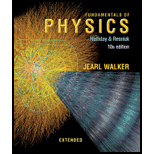
Concept explainers
Two waves are described by
where y1, y2, and x are in meters and t is in seconds. When these two waves are combined, a traveling wave is produced. What are the (a) amplitude, (b) wave speed, and (c) wavelength of that traveling wave?
Want to see the full answer?
Check out a sample textbook solution
Chapter 16 Solutions
Fundamentals of Physics Extended
Additional Science Textbook Solutions
Tutorials in Introductory Physics
College Physics: A Strategic Approach (3rd Edition)
Fundamentals Of Thermodynamics
Physics: Principles with Applications
University Physics Volume 1
Essential University Physics: Volume 1 (3rd Edition)
- A sound wave in air has a pressure amplitude equal to 4.00 103 Pa. Calculate the displacement amplitude of the wave at a frequency of 10.0 kHz.arrow_forwardA speaker is placed at the opening of a long horizontal tube. The speaker oscillates at a frequency of f, creating a sound wave that moves down the tube. The wave moves through the tube at a speed of v=340.00 m/s. The sound wave is modeled with the wave function s(x,t)=smaxcos(kxt+) . At time t=0.00 s , an air molecule at x=2.3 m is at the maximum displacement of 6.34 nm. At the same time, another molecule at x=2.7 m has a displacement of 2.30 nm. What is the wave function of the sound wave, that is, find the wave number, angular frequency, and the initial phase shift?arrow_forwardIn Figure OQ14.3, a sound wave of wavelength 0.8 m divides into two equal parts that recombine to interfere constructively, with the original difference between their path lengths being |r2 − r1| = 0.8 m. Rank the following situations according to the intensity of sound at the receiver from the highest to the lowest. Assume the tube walls absorb no sound energy. Give equal ranks to situations in which the intensity is equal. (a) From its original position, the sliding section is moved out by 0.1 m. (b) Next it slides out an additional 0.1 m. (c) It slides out still another 0.1 m. (d) It slides out 0.1 m more. Figure OQ14.3arrow_forward
- A steel wire of length 30.0 m and a copper wire of length 20.0 m, both with 1.00-mm diameters, are connected end to end and stretched to a tension of 150 N. During what time interval will a transverse wave travel the entire length of the two wires?arrow_forwardTwo sinusoidal waves with identical wavelengths and amplitudes travel in opposite directions along a string producing a standing wave. The linear mass density of the string is =0.075 kg/m and the tension in the string is FT=5.00 N. The time interval between instances of total destructive interference is t=0.13 s. What is the wavelength of the waves?arrow_forwardRank the waves represented by the following functions from the largest to the smallest according to (i) their amplitudes, (ii) their wavelengths, (iii) their frequencies, (iv) their periods, and (v) their speeds. If the values of a quantity are equal for two waves, show them as having equal rank. For all functions, x and y are in meters and t is in seconds. (a) y = 4 sin (3x 15t) (b) y = 6 cos (3x + 15t 2) (c) y = 8 sin (2x + 15t) (d) y = 8 cos (4x + 20t) (e) y = 7 sin (6x + 24t)arrow_forward
- A cable with a linear density of =0.2 kg/m is hung from telephone poles. The tension in the cable is 500.00 N. The distance between poles is 20 meters. The wind blows across the line, causing the cable resonate. A standing waves pattern is produced that has 4.5 wavelengths between the two poles. The air temperature is T=20C . What are the frequency and wavelength of the hum?arrow_forwardA speaker is placed at the opening of a long horizontal tube. The speaker oscillates at a frequency f, creating a sound wave that moves down the tube. The wave moves through the tube at a speed of v=340.00 m/s. The sound wave is modeled with the wave function s(x,t)=smaxcos(kxt+) . At time t=0.00 s , an air molecule at x=3.5 m is at the maximum displacement of 7.00 nm. At the same time, another molecule at x=3.7 m has a displacement of 3.00 nm. What is the frequency at which the speaker is oscillating?arrow_forwardTwo identical loudspeakers 10.0 m apart are driven by the same oscillator with a frequency of f = 21.5 Hz (Fig. P17.6) in an area where the speed of sound is 344 m/s. (a) Show that a receiver at point A records a minimum in sound intensity from the two speakers. (b) If the receiver is moved in the plane of the speakers, show that the path it should take so that the intensity remains at a minimum is along the hyperbola 9x2 16y2 = 144 (shown in red-brown in Fig. P17.6). (c) Can the receiver remain at a minimum and move very far away from the two sources? If so, determine the limiting form of the path it must take. If not, explain how far it can go. Figure P17.6arrow_forward
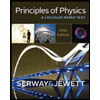 Principles of Physics: A Calculus-Based TextPhysicsISBN:9781133104261Author:Raymond A. Serway, John W. JewettPublisher:Cengage Learning
Principles of Physics: A Calculus-Based TextPhysicsISBN:9781133104261Author:Raymond A. Serway, John W. JewettPublisher:Cengage Learning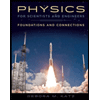 Physics for Scientists and Engineers: Foundations...PhysicsISBN:9781133939146Author:Katz, Debora M.Publisher:Cengage Learning
Physics for Scientists and Engineers: Foundations...PhysicsISBN:9781133939146Author:Katz, Debora M.Publisher:Cengage Learning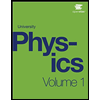 University Physics Volume 1PhysicsISBN:9781938168277Author:William Moebs, Samuel J. Ling, Jeff SannyPublisher:OpenStax - Rice University
University Physics Volume 1PhysicsISBN:9781938168277Author:William Moebs, Samuel J. Ling, Jeff SannyPublisher:OpenStax - Rice University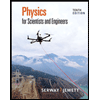 Physics for Scientists and EngineersPhysicsISBN:9781337553278Author:Raymond A. Serway, John W. JewettPublisher:Cengage Learning
Physics for Scientists and EngineersPhysicsISBN:9781337553278Author:Raymond A. Serway, John W. JewettPublisher:Cengage Learning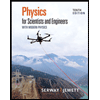 Physics for Scientists and Engineers with Modern ...PhysicsISBN:9781337553292Author:Raymond A. Serway, John W. JewettPublisher:Cengage Learning
Physics for Scientists and Engineers with Modern ...PhysicsISBN:9781337553292Author:Raymond A. Serway, John W. JewettPublisher:Cengage Learning




